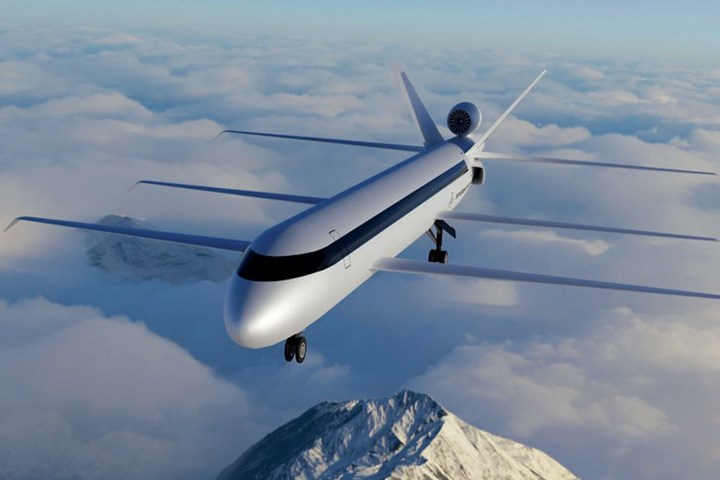SE Aeronautics deploys composite one-piece fuselage, thin-wing airliner concept
Disruptive design said to offer a stronger, more streamlined aircraft that doubles lifespan and lowers fuel consumption by 70%.

SE Aeronautics' mid-market airliner concept, the SE200, could carry up to 264 passengers with a range of 10,560 miles, reducing CO2 production as measured by per seat kilometer by 80%. Photo Credit: SE Aeronautics, Airframer
SE Aeronautics (Trussville, Ala., U.S.) has launched a new widebody airliner concept with an all-composite, one-piece monocoque construction. The company's technological improvements also turn the corner on efficiency, sustainability, safety, comfort and operating cost.
Aircraft manufacturers have been using the same aircraft design for the past 60 years, with few exceptions, the company says. “Our innovative technology and new aircraft design will lower fuel consumption by 70% and lower CO2 emissions by 80% as measured by per seat kilometer,” says Lloyd Weaver, chief engineer, SE Aeronautics. “The innovative design is a more efficient, light-tri wing configuration that greatly improves lift over drag, resulting in short take-off and landing (STOL) capabilities and long flights. The construction is all composite, molded in one tough, safer piece. We also incorporated super thin, long wings and complete streamlining from the nose to the tail. We did it all.”
Further, with airborne disease safety at the forefront of the company’s design process, SE Aeronautics developed a new “once-through” air feed ventilation system that is said to never recirculates air in the cabin, reducing the risk of exposure from other infected passengers. This, coupled with a new “tilting” seat design, creates a comfort experience that economy passengers have yet to experience.
According to SE Aeronautics, the concept’s disruptive design is also expected to double the lifespan of an aircraft, while reducing overall block hour cost by half when compared to other aircraft its size. With an emphasis on safety, the design is made of one solid-molded piece of fuselage that the company claims is many times stronger than existing aircraft. The fuel is not stored in the wings but in self-sealing bladders on top of the fuselage and in the event of emergency landing over water, the aircraft floats.
SE Aeronautics patent-pending technology has culminated into the SE200, a mid-market widebody aircraft that will carry up to 264 passengers, function as a lightweight regional or long-range airliner with a non-stop range of 10,560 miles. “This aircraft will be the most practical, profitable and permanent solution to the grossly underperforming airliner technology of today. Our manufacturing efficiency will allow us to produce our aircraft in significantly less time than the current traditional method. But the jewel in the crown is really our ability to get that fuel consumption rate down by 70%. We are going to revolutionize the industry,” says Tyler Mathews, CEO, SE Aeronautics.
Related Content
-
Cryo-compressed hydrogen, the best solution for storage and refueling stations?
Cryomotive’s CRYOGAS solution claims the highest storage density, lowest refueling cost and widest operating range without H2 losses while using one-fifth the carbon fiber required in compressed gas tanks.
-
Materials & Processes: Resin matrices for composites
The matrix binds the fiber reinforcement, gives the composite component its shape and determines its surface quality. A composite matrix may be a polymer, ceramic, metal or carbon. Here’s a guide to selection.
-
The state of recycled carbon fiber
As the need for carbon fiber rises, can recycling fill the gap?
















